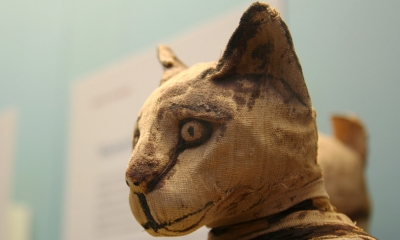
The ancient Egyptians mummified more than just human corpses. Animals were viewed not only as pets, but as incarnations of gods. As such, the Egyptians buried millions of mummified cats, birds, and other creatures at temples honoring their deities.
Because of the sheer scale of animal mummy production, many archaeologists thought the vast majority were churned out in relatively slipshod fashion. But a new study suggests the mummification techniques ancient Egyptians used on animals were often as elaborate as those they employed on the best-preserved human corpses.
Researchers at the University of Bristol, England, conducted the study, which is described in tomorrow’s issue of the science journal Nature.
The team examined samples from four animal mummies—two hawks, a cat, and an ibis—dating from 818 B.C. to 343 B.C. The mummies are housed in the collection of the Liverpool Museum in Liverpool, England.
The researchers analyzed samples of tissue and wrappings using a combination of gas chromatography and mass spectrometry—methods so sensitive they can enable scientists to detect and identify different chemicals in fragments weighing as little as a tenth of a milligram (three and a half millionths of an ounce).
Chemicals detected in tissue samples from the animal mummies revealed the presence of various natural products found in human embalming materials used by the ancient Egyptians. These included animal fats, oils, beeswax, sugar gum, bitumen, and pine tree resins. The researchers found these products had also been applied to the bandages used to wrap up the mummies.
“Millions of animal mummies are known to exist, and there is some debate whether they were treated with the same sort of reverence and sophistication as human mummies,” said Richard Evershed, the study’s coauthor. “We found pretty much exactly the same materials were used on both.”
Evershed concedes that many more animal mummies will need to undergo chemical analysis before any firm conclusions can be drawn. But he noted: “If you started to find the same range of different embalming agents on these mummies as you did on humans, then you’d say it looks like [the ancient Egyptians] were taking some care over this.”
Credit : National Geographic
Picture Credit : Google




